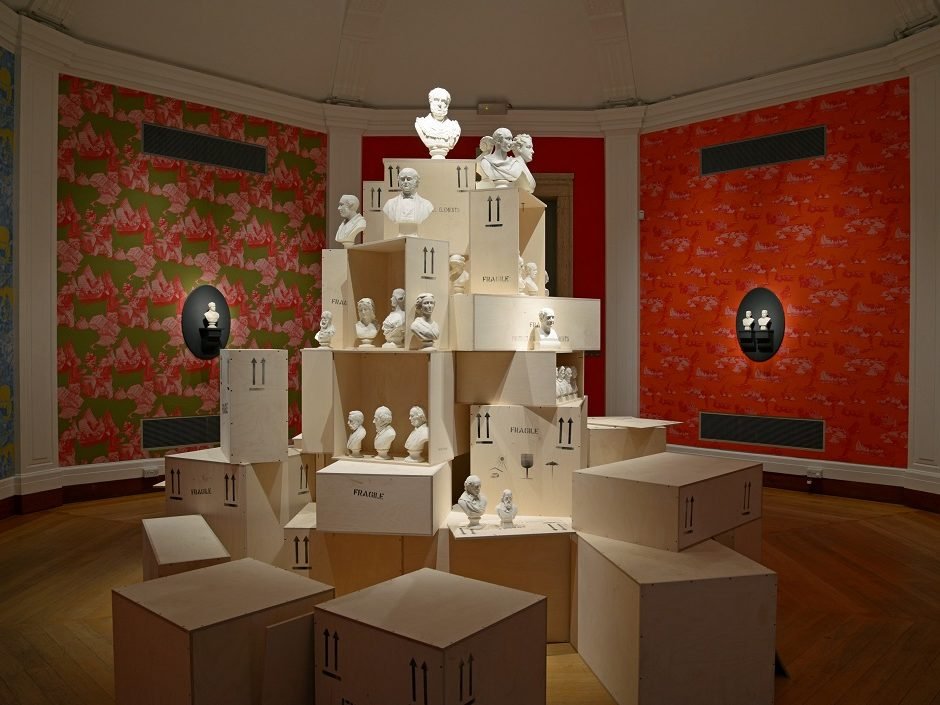Helen Carnac, Alice Kettle and Carinna Parraman
£0.00
available for orders over £1.00
Somerset based artists Helen Carnac, Alice Kettle and Carinna Parraman are currently working on a project at the Centre for Print Research titled The Somerset Almanac.
The word Almanac derives from Greek, meaning calendar that charts the sequence and cyclical relationship between astrology, nature and human beliefs. The imperative of climate crisis and environmental catastrophe was urgently underscored in the recent IPCC paper. Published in August 2021, it bleakly sets out the science of climate change. It states that it is “unequivocally” caused by human actions, resulting in changes that were “unprecedented”, with some becoming “irreversible”. This project seeks to acknowledge the importance of this seismic change through understanding ancient wisdom that explores the balance of human interaction with the planet. It looks at what is near and local as indicative of shared and global consequences and impact.
The project brings together three artists using the almanac format to map and converge ‘dimensions’ of place; subterranean, terra-firma and the celestial. The project's premise is based on human interaction with the environment, the more conscious understanding of local wisdom and belief. The environment is limited to their specific place and the county of Somerset that they share.
The Somerset county borders Exmoor, the coast, the river Severn on the left, Bristol to the North, Dorset to the south and Wiltshire to the East. It contains (or has contained) a wide geological diversity of materials, including coal, lead, limestone, clay and peat, heavily mined for its resources. Removing materials on such a huge scale has made its mark on the county. Still, where there are gaps, different and new wildlife has moved in – resulting in areas of outstanding natural beauty alongside industrially formed ones.
Moving to Somerset for all three artists has been a partial reset to think about how to work in the environment in more sustainable ways, thinking about energy, the land, planting, providing wildlife habitats, thinking about the production of work and its environmental footprint. They have found that through walking, observing, recording, and collecting, they have noticed events, changes and growth on a micro scale. They have also experienced the many large scale impacts this year – changes in weather patterns, intense drought, shortening of the seasons, and unusual patterns in bird and tree life.
Their creative backgrounds hail from different disciplines, but are united and inspired by a rich material culture and sensibilities: sculpture and enamel, painting and embroidery, paper and print. They have shared images, maps, history, and observations and found many common themes in their work. Meeting online and in-person, they have set themselves challenges and shared drawings and sketches that each of them respond to.
Quantity:
Somerset based artists Helen Carnac, Alice Kettle and Carinna Parraman are currently working on a project at the Centre for Print Research titled The Somerset Almanac.
The word Almanac derives from Greek, meaning calendar that charts the sequence and cyclical relationship between astrology, nature and human beliefs. The imperative of climate crisis and environmental catastrophe was urgently underscored in the recent IPCC paper. Published in August 2021, it bleakly sets out the science of climate change. It states that it is “unequivocally” caused by human actions, resulting in changes that were “unprecedented”, with some becoming “irreversible”. This project seeks to acknowledge the importance of this seismic change through understanding ancient wisdom that explores the balance of human interaction with the planet. It looks at what is near and local as indicative of shared and global consequences and impact.
The project brings together three artists using the almanac format to map and converge ‘dimensions’ of place; subterranean, terra-firma and the celestial. The project's premise is based on human interaction with the environment, the more conscious understanding of local wisdom and belief. The environment is limited to their specific place and the county of Somerset that they share.
The Somerset county borders Exmoor, the coast, the river Severn on the left, Bristol to the North, Dorset to the south and Wiltshire to the East. It contains (or has contained) a wide geological diversity of materials, including coal, lead, limestone, clay and peat, heavily mined for its resources. Removing materials on such a huge scale has made its mark on the county. Still, where there are gaps, different and new wildlife has moved in – resulting in areas of outstanding natural beauty alongside industrially formed ones.
Moving to Somerset for all three artists has been a partial reset to think about how to work in the environment in more sustainable ways, thinking about energy, the land, planting, providing wildlife habitats, thinking about the production of work and its environmental footprint. They have found that through walking, observing, recording, and collecting, they have noticed events, changes and growth on a micro scale. They have also experienced the many large scale impacts this year – changes in weather patterns, intense drought, shortening of the seasons, and unusual patterns in bird and tree life.
Their creative backgrounds hail from different disciplines, but are united and inspired by a rich material culture and sensibilities: sculpture and enamel, painting and embroidery, paper and print. They have shared images, maps, history, and observations and found many common themes in their work. Meeting online and in-person, they have set themselves challenges and shared drawings and sketches that each of them respond to.
Somerset based artists Helen Carnac, Alice Kettle and Carinna Parraman are currently working on a project at the Centre for Print Research titled The Somerset Almanac.
The word Almanac derives from Greek, meaning calendar that charts the sequence and cyclical relationship between astrology, nature and human beliefs. The imperative of climate crisis and environmental catastrophe was urgently underscored in the recent IPCC paper. Published in August 2021, it bleakly sets out the science of climate change. It states that it is “unequivocally” caused by human actions, resulting in changes that were “unprecedented”, with some becoming “irreversible”. This project seeks to acknowledge the importance of this seismic change through understanding ancient wisdom that explores the balance of human interaction with the planet. It looks at what is near and local as indicative of shared and global consequences and impact.
The project brings together three artists using the almanac format to map and converge ‘dimensions’ of place; subterranean, terra-firma and the celestial. The project's premise is based on human interaction with the environment, the more conscious understanding of local wisdom and belief. The environment is limited to their specific place and the county of Somerset that they share.
The Somerset county borders Exmoor, the coast, the river Severn on the left, Bristol to the North, Dorset to the south and Wiltshire to the East. It contains (or has contained) a wide geological diversity of materials, including coal, lead, limestone, clay and peat, heavily mined for its resources. Removing materials on such a huge scale has made its mark on the county. Still, where there are gaps, different and new wildlife has moved in – resulting in areas of outstanding natural beauty alongside industrially formed ones.
Moving to Somerset for all three artists has been a partial reset to think about how to work in the environment in more sustainable ways, thinking about energy, the land, planting, providing wildlife habitats, thinking about the production of work and its environmental footprint. They have found that through walking, observing, recording, and collecting, they have noticed events, changes and growth on a micro scale. They have also experienced the many large scale impacts this year – changes in weather patterns, intense drought, shortening of the seasons, and unusual patterns in bird and tree life.
Their creative backgrounds hail from different disciplines, but are united and inspired by a rich material culture and sensibilities: sculpture and enamel, painting and embroidery, paper and print. They have shared images, maps, history, and observations and found many common themes in their work. Meeting online and in-person, they have set themselves challenges and shared drawings and sketches that each of them respond to.






